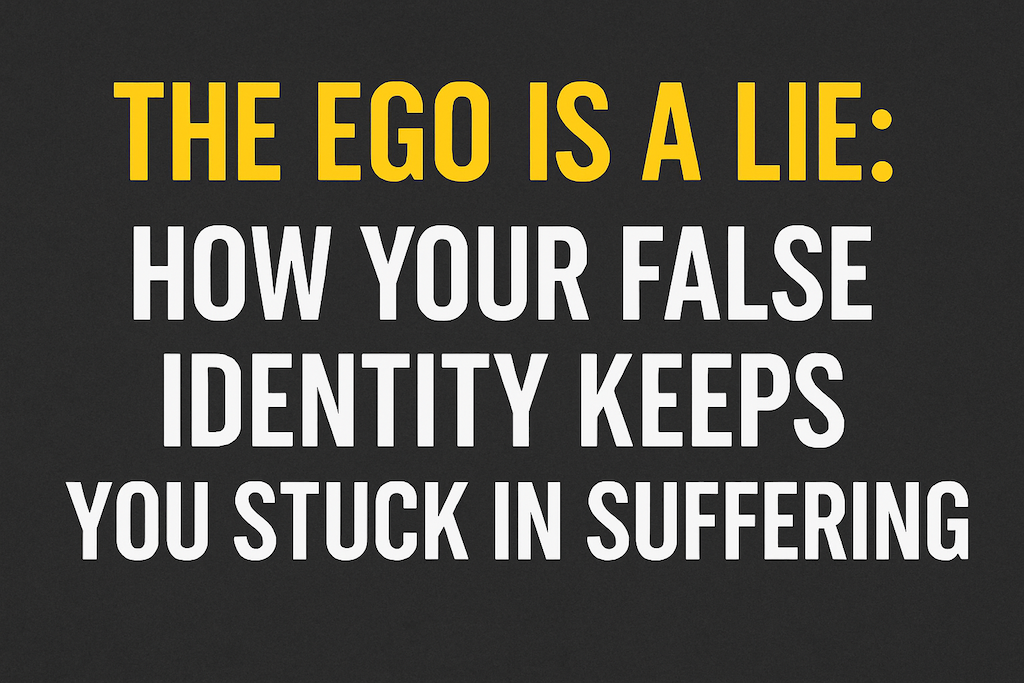If you’ve ever said, “I feel broken,” “I don’t know who I am anymore,” or “People don’t understand me,” you’re not alone. But here’s the truth few dare to confront: the “you” who suffers isn’t actually real.
What you’ve been calling “I” all this time—your name, personality, status, beliefs, and opinions—is not your true self. It’s a false self, a fragile construct made from memory, thought, and conditioning. It’s called the ego.
And the ego isn’t just inaccurate—it’s the very reason you suffer.
🧠 What Is the Ego?
The ego is your mental image of yourself. It includes:
- Your name, nationality, and labels like “introvert,” “smart,” or “unlucky”
- Your past experiences and traumas
- Your social roles (student, employee, parent)
- Your beliefs and opinions
It’s not inherently evil. The ego helps you function in society. But the problem begins when you mistake this temporary construct for your permanent self.
⚠️ The Trap: Believing the Ego Is You
Here’s where suffering begins:
- When someone insults your opinion, you feel attacked—not because it hurts, but because you think you are your opinion.
- When you fail at something, it crushes you—not because failure is fatal, but because you think you are your success.
- When people reject you, it feels unbearable—not because rejection is harmful, but because you think you are your social image.
All of this pain stems from a false identification.
🪞 The Ego Is Made of Thought and Memory
The ego cannot exist in the present moment. It lives only in the past (memories, stories) and the future (imaginations, expectations).
Try this:
Sit still, close your eyes, and stop thinking for a few seconds.
Ask yourself: “Who am I if I don’t think about myself?”
You’ll notice something astonishing—you still exist, but there is no name, no past, no role. Just presence. Just being.
This is the crack in the ego’s illusion.
🧘 How to Break Free from the Ego
1. Observe, Don’t Identify
Thoughts will still arise. “I’m not good enough,” “They don’t respect me,” “I failed again.”
Instead of reacting, observe them like clouds passing. You’ll realize: “These thoughts are happening, but they are not me.”
2. Question the Identity
Ask: “Who told me this is who I am?”
Was it society? Parents? Culture? Memory?
Your true self is deeper than any mental image created by others.
3. Stay in the Now
The ego can’t survive in the present moment.
Practice mindfulness: breathe, listen, feel.
Be where you are—not in your head, but in your senses.
🔥 Why This Truth Is Liberating
When you stop identifying with the ego:
- Criticism loses its sting—you no longer take it personally.
- Fear diminishes—because there’s no “image” to protect.
- Freedom arises—because nothing outside you can define you.
This doesn’t mean you erase your personality or stop playing roles in life. It means you play your role without becoming the role. You no longer act from egoic fear—but from clarity, love, and presence.
🌌 Final Realization: You Were Never the Ego
The ego says: “I am this body. I am these thoughts. I am what I have achieved.”
But your real self—the awareness behind all experience—says nothing. It simply is.
The moment you see this clearly, suffering begins to dissolve. Why? Because you stop defending a lie.
So the next time you feel hurt, rejected, anxious, or overwhelmed, don’t ask:
“What’s wrong with me?”
Ask:
“Who is this ‘me’ that’s suffering?”
That one question could be the beginning of your awakening.
